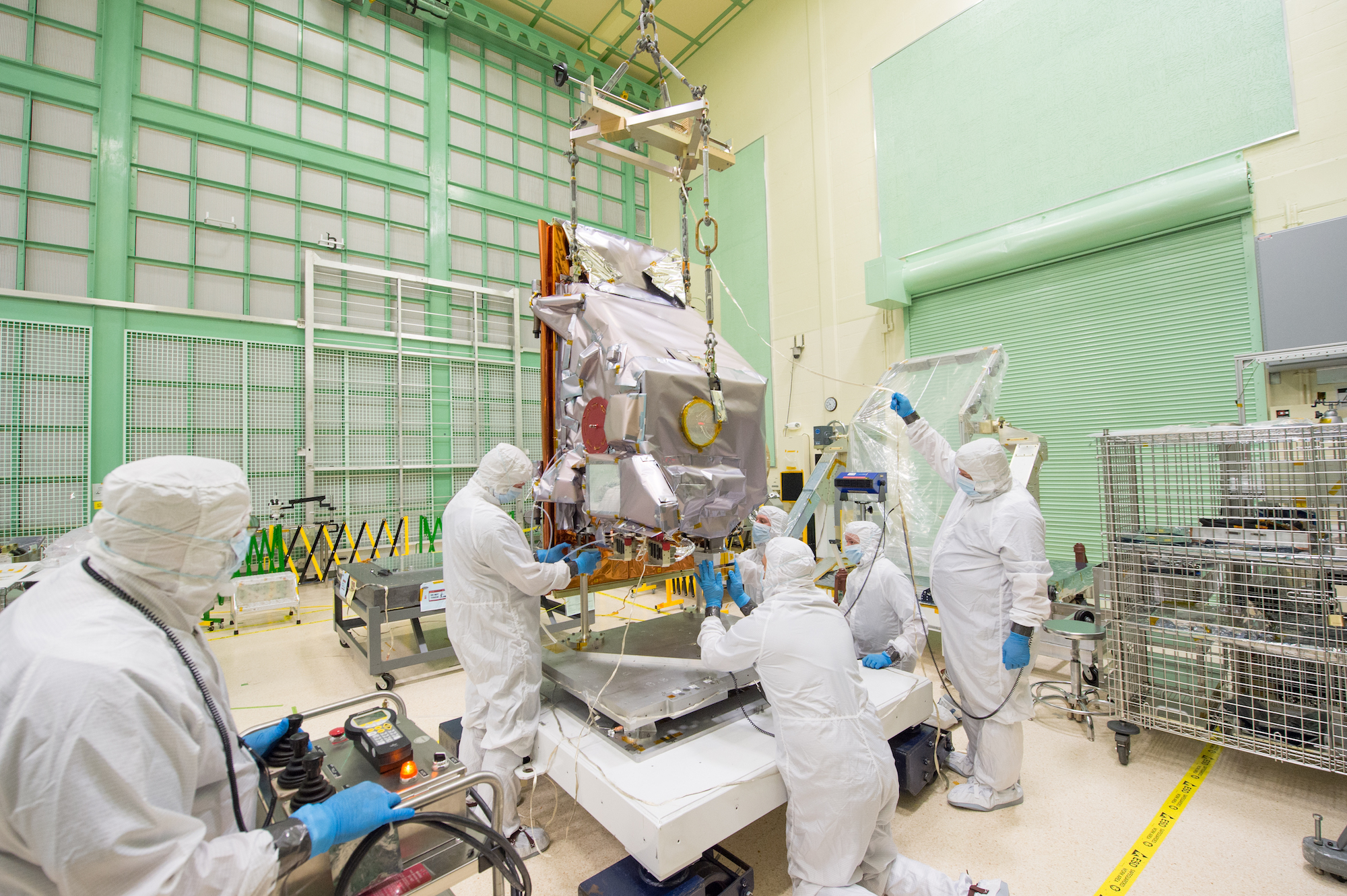From orbit aboard the Landsat 9 satellite, the Thermal Infrared Sensor 2, or TIRS-2, will measure the temperature of Earth’s land surfaces, detecting everything from a smoldering wildfire, to the amount of irrigation used on crop fields, to wispy clouds that are all but invisible to other instruments. First, however, it had to survive tests that simulated the harsh environment of space.
Credits: NASA Goddard
This video can be downloaded for free at NASA’s Scientific Visualization Studio.
This month, TIRS-2 successfully passed the stringent 12-week testing process at NASA’s Goddard Space Flight Center in Greenbelt, Maryland. It was shipped to Northrop Grumman’s facility in Arizona, where it and the Operational Land Imager 2 will be assembled onto the Landsat 9 spacecraft. Landsat 9 is a joint effort of NASA and the U.S. Geological Survey.
Like digital cameras on a smart phone, the TIRS-2 instrument is an imager, said Joel McCorkel, the instrument’s deputy project scientist. But while a camera detects light reflected off an object, TIRS-2 detects the thermal energy that an object emits. The hotter a surface is, the more energy the instrument will detect. And since TIRS-2 is a highly-calibrated scientific instrument, not a camera, it provides data that researchers can use to investigate key questions about our home planet.
TIRS-2 is designed to work in the same way as the first TIRS instrument, which launched on Landsat 8 in 2013 and is still collecting important data on Earth’s surface temperature. But the latest version has a couple improvements.
“The beauty of TIRS-2, is that we had TIRS data from up in orbit and were able to look at what worked, and how we could mitigate what didn’t work,” said Melody Djam, TIRS-2 instrument deputy project manager at Goddard.
The TIRS-2 team incorporated a new optical component to shield the instrument’s sensor from stray light that had caused problems on the original instrument, requiring software fixes. The first TIRS was also designed, constructed, and integrated in less than three years – which is an incredibly quick turnaround for a satellite’s instrument – and so it was only required to last three years. TIRS-2, however, is designed with redundant electronics and other components in order to last at least five years.
TIRS-2 has about 10 main components, and each one was built and tested individually before engineers brought everything together to ensure the instrument worked, Djam said. The engineering team, which included as many as 250 people, then tested the whole instrument both in the clean room, as well as in environmental chambers that simulate the launch and space environments.
With round-the-clock shifts and successful tests, the team delivered the instrument more than two weeks ahead of its target date. TIRS-2 passed its pre-ship review on Aug. 12 and was trucked to Gilbert, Arizona in two shipments. At the Northrop Grumman facility, the team will reassemble it, test it, and make sure everything is ready to integrate the instrument with the Landsat 9 spacecraft this fall.
Taking Earth’s temperatures from orbit
Landsat satellites have been observing Earth since 1972, building the longest continuous record from space of the planet’s forests, farms, cities, and other surfaces. Starting with Landsat 4 and continuing through the first TIRS instrument on Landsat 8, the satellites have carried instruments that can detect thermal energy as well as visible and infrared light – and water managers and others have put these observations to work.
“Landsat’s thermal data is critical for tracking water use in the western United States, where rainfall can be short in supply and managing water resources is critical to ensuring a sustainable supply for farmers, cities, and natural ecosystems,” said Bruce Cook, Landsat 9 deputy project scientist at Goddard.

When plants take up water from the soil, they ‘sweat’ it out as they undergo transpiration, cooling them down just as sweating cools people down. By measuring the temperature of growing plants and soils that are cooled by transpiration and evaporation, respectively, Landsat users can create maps that quantify water use and consumption. The accuracy of these maps is increased by TIRS’ two thermal bands, which allows researchers to subtract out the effect of atmospheric constituents better than with the single-band thermal data from previous Landsat instruments.
TIRS also works “behind the scenes” to detect clouds that are difficult to sense with visible data alone, which makes it an important filter for scientists constructing Landsat time series to record disturbances and changes in land cover over time.
“With TIRS, scientists can better identify clouds, remove those data, and focus on the real land surface,” said McCorkel. “This increases the efficiency of their study and the accuracy of their science, whether they’re looking at a plot of land or a continent.”
For more information, visit: https://landsat.gsfc.nasa.gov/ or www.nasa.gov/landsat
By Kate Ramsayer
























